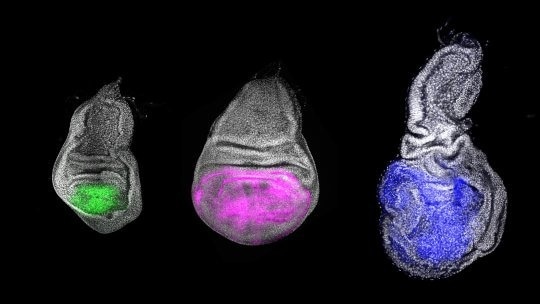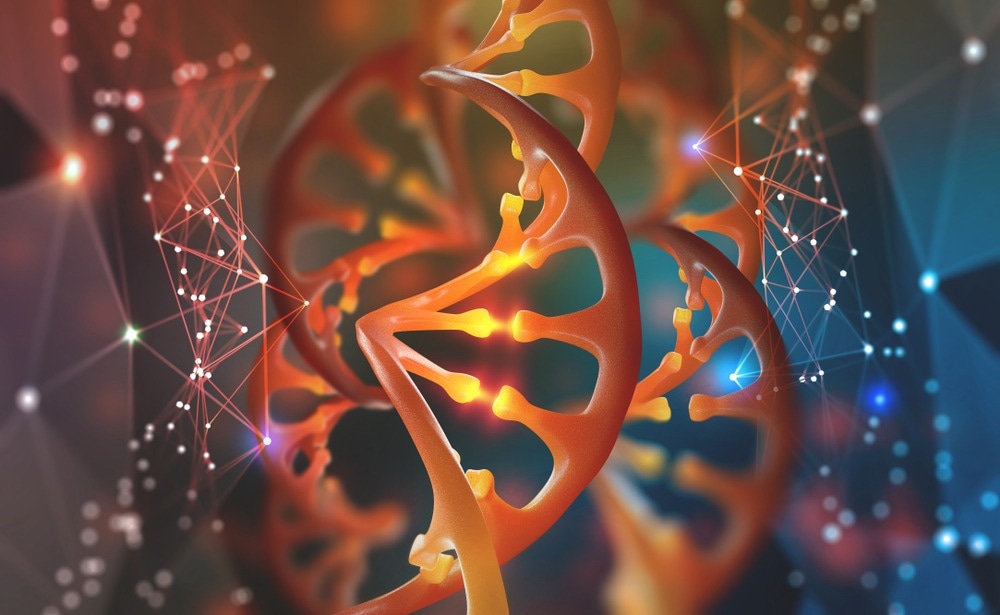Chinmo, the gene responsible for the juvenile stage in insects, has been discovered by researchers. This gene is found in animals and could have a role in cancerous processes.
 Photograph of the adult wing precursor imaginal cells of Drosophila melanogaster. Image Credit: Panagiotis Giannios
Photograph of the adult wing precursor imaginal cells of Drosophila melanogaster. Image Credit: Panagiotis Giannios
The Chinmo gene is crucial for creating the juvenile stage in insects, according to the study, which was led by the Institute for Evolutionary Biology (IBE, CSIC-UPF) and the IRB Barcelona and published in the journal eLife.
Additionally, it demonstrates that the Br-C and E93 genes control insect maturity. These genes, which are also found in humans, promote and repress cancerous processes, respectively.
These genes have been preserved throughout insect evolution, according to the research, which used the fruit fly Drosophila melanogaster and the cockroach Blattella germanica. As a result, it is thought that they could be crucial in the development of metamorphosis.
The Chinmo, Br-C, and E93 Genes are the Hands of the Biological Clock in Insects
The embryo, which develops inside the egg, the larva (juvenile stage), which grows in several phases, and the pupa, which is the stage that includes metamorphosis and the formation of the adult organism, are the three stages of development that insects that undergo complete metamorphosis, like flies, go through.

Image Credit: Yurchanka Siarhei/Shutterstock.com
According to previous studies, insects’ Br-C gene controls how their pupae develop. The same IBE team that oversaw this study indicated the crucial role of E93 in 2019 to finish insect metamorphosis and start the development of the tissues that would eventually create the adult.
But until today, it was unknown which gene determined the juvenile stage. The Chimno gene has now been determined by this study to be the primary precursor of this stage in insects.
The authors found that by eliminating the Chinmo gene in Drosophila specimens, the insects advanced to the pupal stage without finishing the juvenile stage, progressing to the adult stage early. These results support the notion that Chinmo is crucial for juvenile development.
We have discovered that Chinmo promotes tissue growth during the juvenile stage of Drosophila by keeping the cells undifferentiated. Thus, while Chinmo is expressed, cells cannot differentiate as the gene suppresses the action of those genes responsible for forming adult tissues.”
Dr. Xavier Franch, Study Co-Lead and Researcher, Institute for Evolutionary Biology
According to the study’s findings, inactivating the Chinmo gene is required for Drosophila to effectively transition from the juvenile to the pupal stage and complete metamorphosis.
It also supports the notion that the sequential actions of the three genes, namely Chinmo, Br-C, and E93, throughout the larval, pupal, and adult phases, respectively, coordinate the development of the many organs that make up the adult organism.
Growth-regulating Genes Play a Key Role in Cancerous Processes
The vast family of BTB-ZF transcription factors, which includes proteins implicated in cancer and present in humans, includes Chinmo and Br-C. Although previous studies had indicated that Chinmo is a precursor to cancer, the part played by Br-C and E93 in this condition was not recognized.
Understanding the molecular functioning of cell growth can help to better comprehend cancer processes. Healthy cells grow, differentiate, and mature. In contrast, cancer cells grow uncontrollably, do not differentiate, and fail to mature. So, determining the role of Chinmo, Br-C, and E93 may be key to future clinical research.”
Dr. Jordi Casanova, Study Co-Author and Researcher, Institute for Research in Biomedicine Barcelona
The research indicates that while Chinmo is an oncogenic precursor because it encourages tissue proliferation and blocks differentiation, C-Br and E93 work as tumor suppressors by promoting tissue maturation.
Chinmo Reveals How Metamorphosis Evolved
When compared to other insects that have a much simpler metamorphosis, like cockroaches, insects that experience a complete metamorphosis, like butterflies and flies, are an evolutionary novelty. The researchers examined how Chinmo, Br-C, and E93 operate in cockroaches to comprehend how this progressive process had occurred.
Analyzing the function of these genes in different species of insects allows us to observe how evolution works. The observation that Chinmo function is conserved in insects as evolutionarily separated as flies and cockroaches gives us clues as to how metamorphoses originated.”
Dr. David Martin, Study Co-Lead and Researcher, Institute for Evolutionary Biology
According to the study’s findings, the transition from the juvenile to the adult form can be determined by the regulatory actions of Chinmo and E93 in more primitive insects like the cockroach. However, in insects like flies, the Br-C gene’s inclusion permitted the formation of pupae and the emergence of complete metamorphosis through a new pupal stage.
Source:
Journal reference:
Chafino, S., et al. (2023). Antagonistic role of the BTB-zinc finger transcription factors chinmo and broad-complex in the juvenile/pupal transition and in growth control. eLife. doi.org/10.7554/eLife.84648